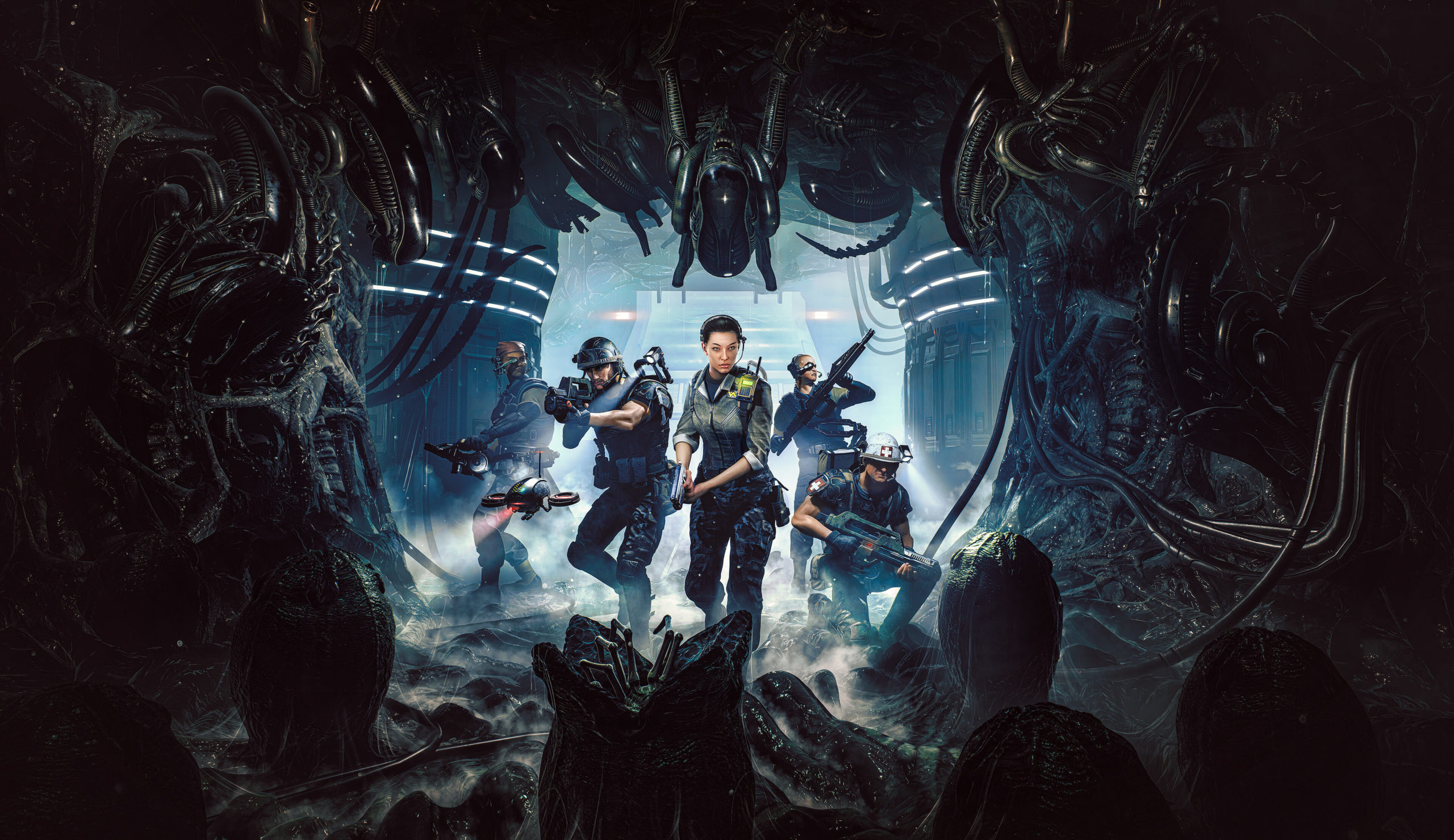Both the Aliens and Predator franchises have had their fair share of hit-and-miss excavations into the video game sphere over the years. For every Alien: Isolation, we’ve suffered an Aliens: Colonial Marines. Much like the movies, you can’t have a blockbuster like Aliens vs. Predator without the horrendous follow-up of Aliens vs Predator: Requiem. Thankfully, Aliens: Dark Descent is the former, as opposed to the latter.
A unique blend of different strategy genres, the game mixes XCOM, Desperados and a hint of Helldivers to create something wholly unique. It’s very clearly smaller budget to the usual AAA fare, with which you can expect some creative successes and some frustrating technical trappings. Stick with this burgeoning, criminally underpriced package however, and you’ll discover a gem worthy of hosting a facehugger.
After a year of writing about it, let’s descend into the depths of the Alien universe once more. We’re on an express elevator, going down. Only question is, do you want to command your squad of marines through this nightmare?
Lethe Me Alone
Leaving the cramped corridors of the Nostromo and Sevastopol behind, Aliens: Dark Descent is set on the planet of Lethe. Following some rather sinister goings-on with the local Weyland-Yutani operation based on the planet, the entire world has been placed into lockdown. I’m sure you can guess what extraterrestrial creature has incited such a response.
We take on the role of Maeko, a deputy administrator who’s rapidly thrust into the spotlight of leadership when everything starts going to all manner of gooey, acidic hell. Along for the ride is Harper, a marine sergeant who has a not at all concerning knack for getting headaches around Xenos. Aboard your ship, the Otago, is a small handful of other supplementary characters, though they’re more forgettable.
Maeko and Harper make up the bulk of Aliens: Dark Descent’s story. Their contrasting viewpoints are relatively interesting and both are voiced very well. The over-arching plot regarding the mysterious chaos occurring on Lethe is predictable, yet it gets enough of the storytelling fundamentals right to be engaging.
This is by no means a classic sci-fi story, far from it. But then, the movies never really broke ground with their narrative chops either. If you’ve seen much of Alien lore prior to entry, then you’ll likely guess the plot before the game hits its halfway point. Yet, the intense story moments hit their mark and come the end, Maeko’s journey felt well-earned and thoroughly realised.
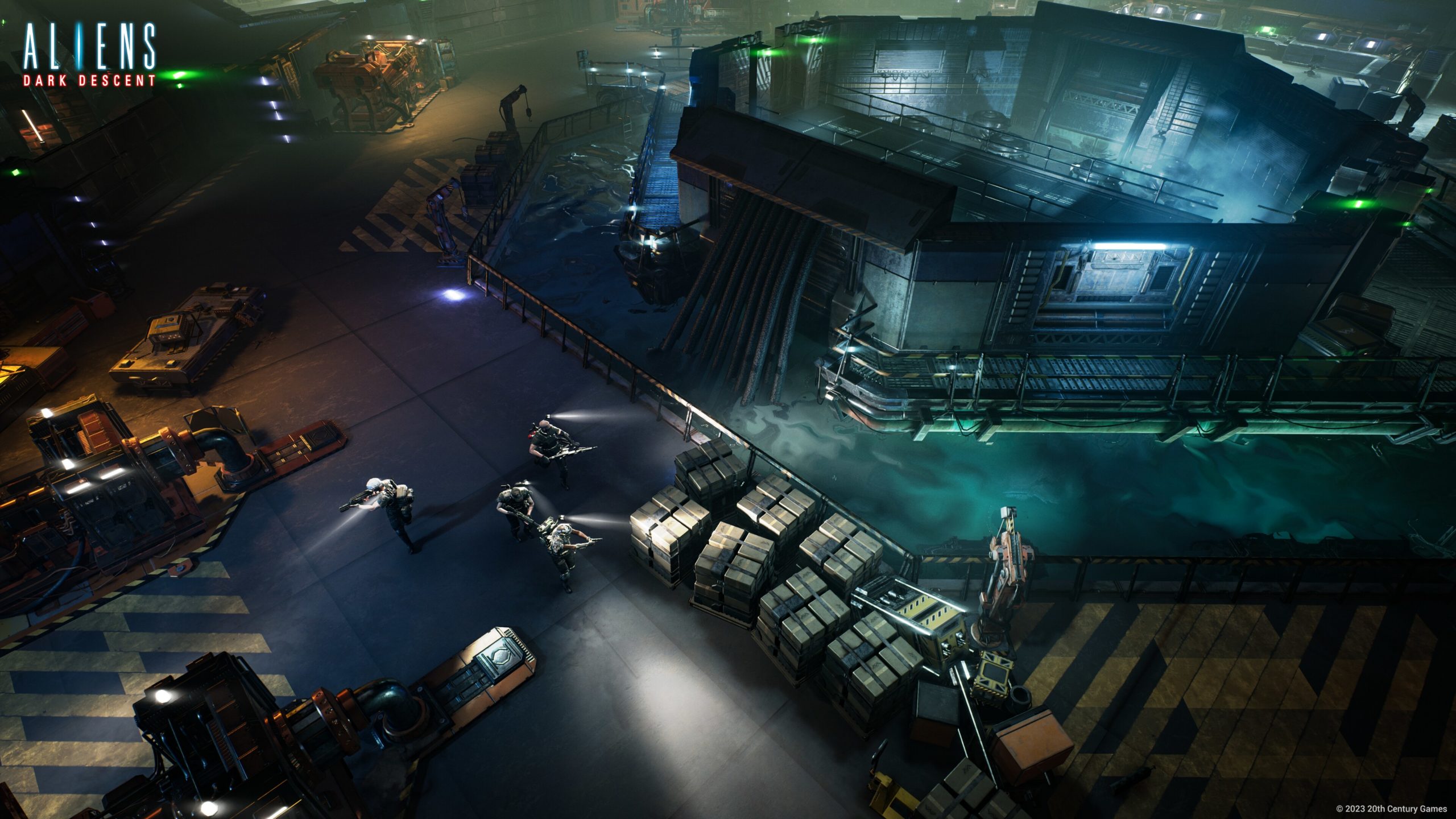
Gear Up, Squad
As you journey across Lethe to rescue survivors and escape the planetary blockage, you’ll be commanding your squad of marines across multiple perilous locations. Unlike XCOM, Aliens: Dark Descent is real-time action, instead of turn-based. You may also be surprised to learn it isn’t co-op, which the trailers may have lulled you into thinking.
You command your squad as one single entity. You’ll tell them where and when to move, when to sprint, what to shoot and what abilities they deploy to fend off the dreaded shiny head Xenomorphs. The controls work surprisingly smoothly on console, which is a blessing. Hitting Square guides your marines to wherever your cursor is aiming and marines will automatically find their route or duck into cover.
Abilities are managed with a menu system once you hit R2, allowing you to either slow or pause time entirely. I’d heartily recommend activating the pause option in the menu, trust me. Aliens: Dark Descent provides the perfect blend of visual cues to guide your decision-making without effectively running the game for you and it’s intuitive to play once you get passed the extended tutorial sequence.
What’s most difficult to wrap your around (or at least was for me), is the emphasis on stealth and actively avoiding combat encounters at all costs. Aliens: Dark Descent positively demands you treat this Xeno threat more akin to the original Alien as opposed to its action-heavy sequel Aliens. You’ll do your fair share of armour shredding and pulse rifle gunning – don’t you worry – it’s just that you’ll have to be strategic about it if you want to keep your chest cavity safe from those chestbursters.

A Grenade A Day Keeps The Alien Away
Don’t let the intuitive and smooth controls lull you into a false sense of survivability, as Lethe is positively lethe-al to endure (sorry). Every encounter you have with a Xenomorph alerts the hive, triggering aliens to head directly for your squad. More than that, every alert increases the hive difficulty, increasing the number of patrols, larger, more dangerous species to encounter and even massive onslaughts.
Your group of USCM soldiers are certainly powerful, but only if used tactically. Leave them caught cold in a room against a group of clawing, tail-whipping enemies and they’re going to be torn apart. Dark Descent captures that fear factor of the Xenomorphs and will have you nervously checking your motion tracker for every ping that goes off. In fact, it probably nails that tense sense of dread better than most of the franchise’s video game entries.
This is where the strategy element thrives. Marines all have varying abilities from laying down sentries, to using flamethrowers, to whipping out flares to mark enemies for destruction. Deciding when and more importantly where to fight is the real meat that makes everything click. Nothing is more satisfying than taking on an onslaught, 4 sentries deployed, suppressive fire laid down and every grenade fired is blowing apart the swarm.
On some levels, the hive difficulty can feel wildly inconsistent, however. In one mission I was effectively stuck in an endless loop of combat encounters thanks to the placement of hive spawn points, making it almost impossible to progress without cheesing it (and sacrificing a turret or two). The recon’s ability to also pick off targets without triggering alarms is essential as a result, but it almost felt like cheating, creating a bit of an imbalance in the gameplay.
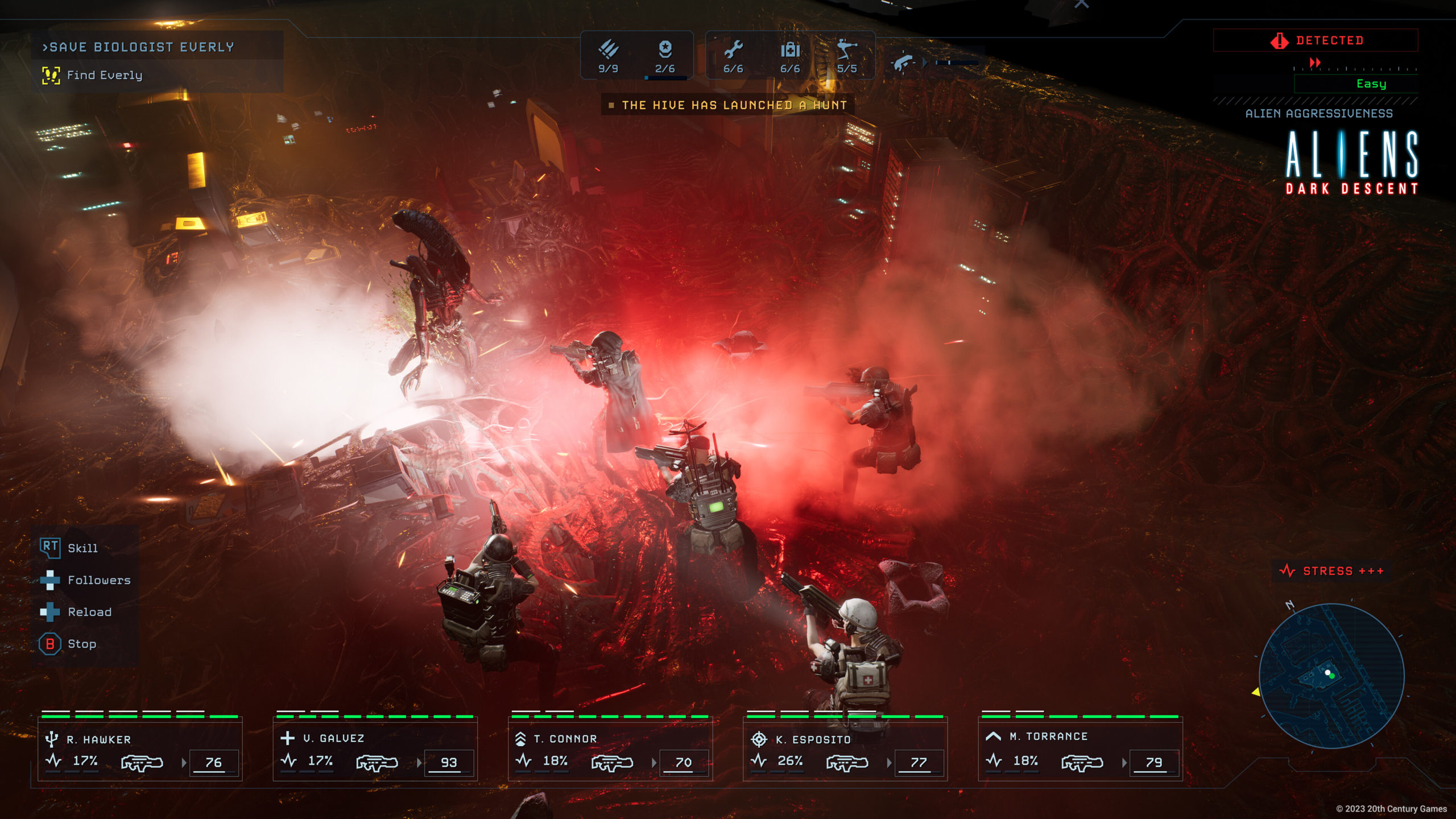
Move It You Slugs
Combat and rogue aliens stalking the halls aren’t your only concern, too. Your marines will pick up stress the more firefights they’re exposed to, moving up three tiers, each with its own debuff. Additionally, you’ll need to manage your squads ammunition (which is also used for sentries, blowing up walls, arming your drone etc) and carefully manage tools and medkits.
Tools are used to weld, decrypt and interact with certain doors. Sounds obvious, but trust me, they’re the most important resource. Welding doors especially can block off flank routes or provide a shelter room for your squad to rest in while on missions, decreasing their stress. I know we joke about locking ourselves in rooms to play video games but in this case it’s actually necessary to survive.
Squad members can pick up injuries and psychological traumas, adding new negative traits to their abilities and performance. The XCOM influence is very apparent here, as between missions you’ll need to manage precious allocations of time for recovery to keep everyone at their best. Which, as you might expect, is nigh-on impossible.
While I never became particularly attached to my group of intergalactic bug hunters, I appreciated the constant push-and-pull of having to throw in a tired or wounded solider to another fight, as it added an extra layer of complexity to keep in mind. Aliens: Dark Descent is also less punishing with the loss of a unit or squad, as while marines definitely become more powerful as they level up, you can still succeed with a lower levelled group.
Given I had to restart my original XCOM campaign twice when I got my best units decimated, you’d be surprised how much of a welcome compromise this felt like.
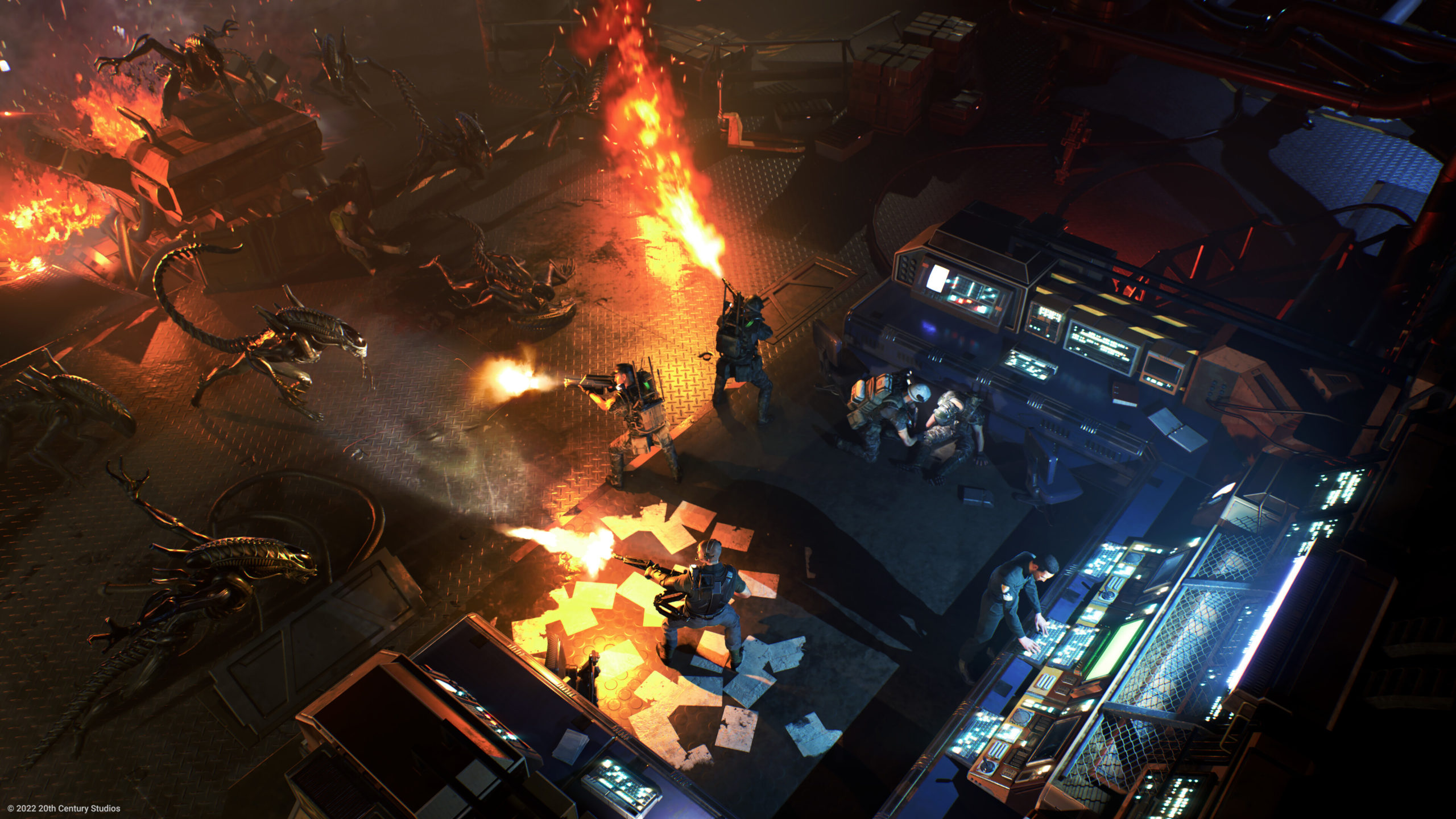
Home Is Where The Otago Is
Between your deployments on Lethe, you’ll return to your makeshift base – the spaceship Otago. Resources you collect, people you save and ammo you return with is added to your reserve for future missions. Meanwhile, any changes you’ve made to the map will be permanent, so should you return that door will still be welded or that poor sentry that covered your previous escape will still be there, smashed.
On the Otago you can research one-use per mission upgrades, use the medbay to speed up healing or therapy, develop new weapons in the workshop or train and equip your marines in the armoury. The menus are easy to navigate and there’s no base-building or faff to worry about. You’re provided one deployment per in-game day, while healing units is further measured by days.
There’s nothing particularly revolutionary in here. You can acquire all available upgrades and weapons in a single run without being 100% thorough and the side characters that accompany each section of the Otago are pretty forgettable. Initially, it feels a little under used, but that changes about a third of the way in when Weyland-Yutani’s Cerberus Protocol enters its next phase.
You know how time is the most pressurising and scary thing to exist in strategy games like this? Well, Aliens: Dark Descent doesn’t miss a beat in using it to intimidate you. At a certain point, Lethe will be designated for orbital bombardment, giving you a set amount of in-game days to finish your excursions and escape.
While I’m not normally a fan of these time-induced pressures, on normal difficulty the allotted number of days actually felt fair. Moreover, it increased the tension for when to extract on a mission if it meant having to return to complete the last objectives, or when to sacrifice another day of recovery to get a trooper back into the field.
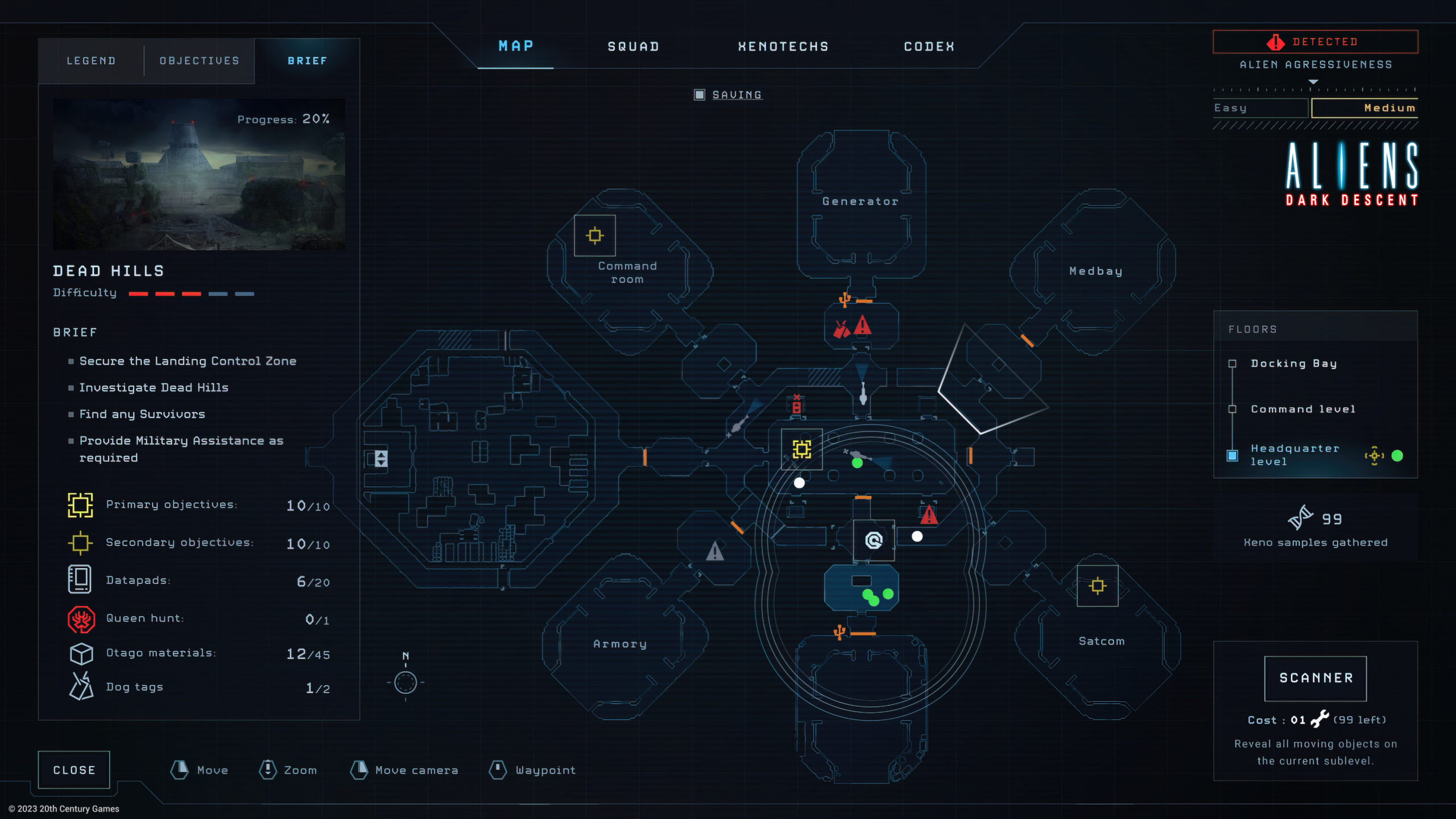
A Hive Of Bugs
Sadly, while other areas of the game are majoritively good with the occasional flaw, Aliens: Dark Descent’s technical performance is as effective as Private Hudson. Let’s start with the good: the environmental design across Lethe’s levels feel ripped straight from the movies, with excellent ambient design and an attention to detail that nails the look and atmosphere of Aliens itself.
That’s a big positive, which makes the rest of the package such a shame. Cutscenes have character models with weirdly proportioned body shapes and overly smooth facial features. On more than one occasion, the audio would bug out by repeating the same line of dialogue over itself, which is rather distracting in an emotionally pivotal story reveal.
During gameplay, it would be all too common for a marine to get stuck on geometry, either unable to find a path out or just getting themselves torn asunder by a Praetorian. Thank our lucky stars the game makes numerous autosaves, as I had to reload more than a dozen times owing to the game freezing, locking up controls or just not loading the actual level but making it look like it had. Weird.
I would probably be inclined to forgive this more if there wasn’t a difficulty option that restricts your saves. In its current state, I simply wouldn’t even attempt that mode due to how much time you’ll inevitably lose to the various glitches. Overall, nothing tears the game down completely, but the technical minefield you’ll encounter will feel somewhat akin to walking into a Xeno queen’s lair of eggs.
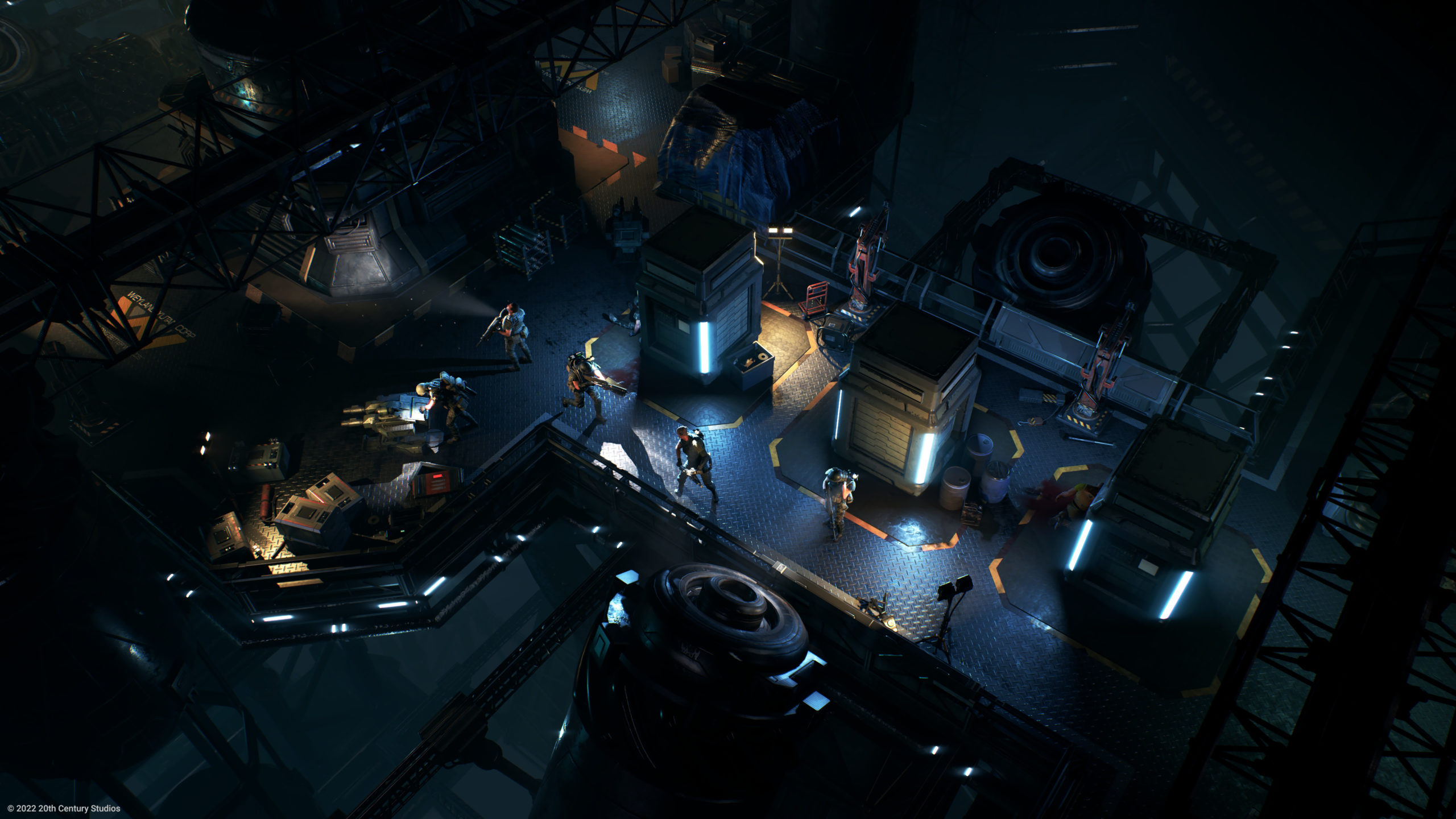
Worth The Descent, But Beware The Darkness
Aliens: Dark Descent ends up a real hybrid of an experience, like a Xenomorph bursting out of a horse. When it combines its influences and cocktail of strategy elements, it has a powerful kick that punches above its weight. The splicing experiment doesn’t always hold up owing to its technical problems and some erratic difficulty spikes, but then what kind of symbiosis ever goes smoothly?
What I will say is that Tindalos Interactive have recreated that iconic Aliens atmosphere. From the cackle of the pulse rifles to the threat of a horde of shiny armoured death machines, it made me feel like I was in my very own movie. Sometimes, I was Alien, skulking about corridors and avoiding detection. Other times, I was Aliens, basking in a glorious set-piece of green-blooded destruction. Occasionally, I was Aliens 3, wishing I was doing anything else but suffering another ridiculous screw up.
Despite its issues, my memories of Aliens: Dark Descent will be of its highs. The times I narrowly survived an excursion or created that oh-so perfect killbox. I’ll also remember losing an entire squad to a rather vicious Crusher I simply forgot to order them out of the way of. Either way, it’s a memorable experience.
At only £34.99 and offering a campaign that has upwards of 15 hours of content, plus a host of other difficulty options, secondary objectives and collectibles to acquire, this feels almost criminally undervalued. Just be wary of the metaphorical as well as the literal bug threats, there’s unfortunately no motion tracker for those.
For the modest price , Aliens: Dark Descent is a solid and well-designed AA strategy title. The mix of various influences coalesce into a frantic, tense and rewarding gameplay cocktail that has a decent (if predictable) story to carry you along for the ride. The bugs and technical problems are notable and frustrating, but they’re an annoyance that pales to the experience of taking on the Xenomorph hordes in your very own Alien-style movie.

Aliens: Dark Descent is available now for PlayStation 4 and 5, Xbox Series S|X, Xbox One and PC.
Developer: Tindalos Interactive
Publisher: Focus Entertainment
Disclaimer: In order to complete this review, we were provided with a promotional copy of the game. For our full review policy, please go here.
If you enjoyed this article or any more of our content, please consider our Patreon.
Make sure to follow Finger Guns on our social channels. Twitter, Facebook, Twitch, Spotify or Apple Podcasts – to keep up to date on our news, reviews and features.
